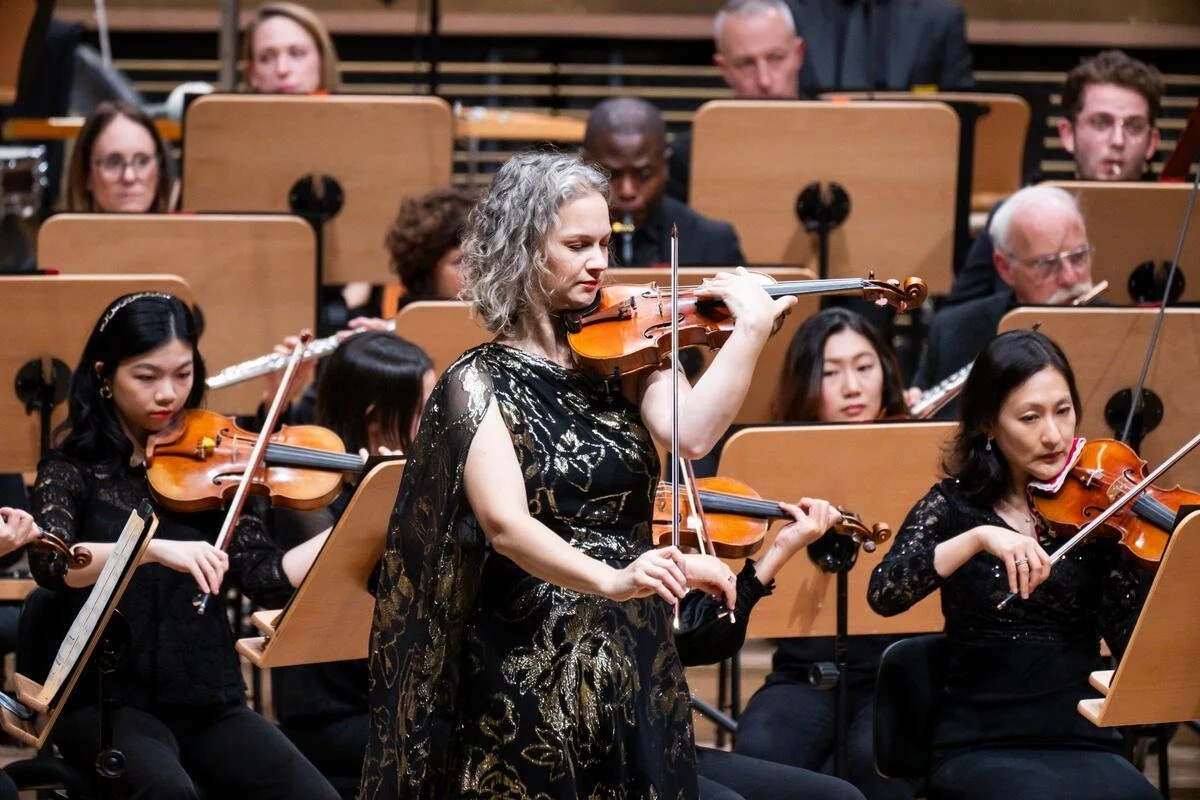REVIEW: Simone Young Returns to New York Philharmonic with a Bang
Above: Simone Young conducting the New York Philharmonic. Photo: Caitlin Ochs
APRIL 13, 2019
BY BRIAN TAYLOR
Imagine getting a call, "This is the New York Philharmonic. It's been a long time! Totally last minute, but our conductor has called in sick, and we were wondering if you could come conduct Mahler's Sixth Symphony this week?" Well, if you are Simone Young, they have come to the right person. Filling in on short notice for an ailing Jaap van Zweden, Ms. Young, who last appeared with the Philharmonic in 1998, absolutely nailed this demanding task.
Mahler's Sixth, the so-called "Tragic," might be the least lovable of his symphonies. Composed in 1904, it is one of the most formally classical of his contributions to the genre. Four movements, and it begins and ends in the same key of A Minor. Lasting an hour and a half, it's an epic abstract tone poem, like a novel, or perhaps, an epic film score without the film. Mahler's protagonist has an appointment with fate, and it does not end well.
Rest assured, Ms. Young knows every note of Mahler's gargantuan score, and thanks to her complete mastery of the conductor's tools, she commanded the Philharmonic like a virtuoso. As soon as she appeared on the podium, her focused, clearheaded energy galvanized the orchestra. The "Tragic" calls for impressive forces, all hands on deck, and New York's musicians filled the stage at David Geffen Hall, and under the vibrant leadership of Ms. Young, they played as brilliantly as ever.
The first movement, Allegro energico, ma non troppo, begins like a march, introducing a calvary of themes and motives. Ms. Young shaped the sweeping "Alma theme" (Mahler's wife, Alma, tells us it represented her) with gushing emotion, a feeling of being windswept -- heaved and suspended in the air at the top of the phrases, and gushing forward when the tune breaks down into manic, descending sixteenth notes.
Mahler’s Sketch for the first movement.
The development section feels like a new scene in our hero's life. Following a brief struggle, we arrive on a foreign planet in a ravishing passage foreshadowing the John Williams film music for Luke Skywalker's arrival on Yoda's swamp planet Dagobah: ethereal strings in tight harmony trilling on the bridge (whistly and ghostly), or tremolando on the fingerboard, doubled in the celestas, and creepy, muted low brass. Mahler's cow-herding bells sound off in the distance.
The strings and winds trade turns in an idyllic, wistful lyrical passage. Richard Deane sounded splendid in his delicate horn solo, handing it surreptitiously to Frank Huang, concertmaster, then to Amy Zoloto traversing her rich bass clarinet's entire range in a long line bringing our hero back down to earth. Soon, the marching resumes, and a wrenching battle ensues. The various thematic motifs collide in a struggle for domination, the Alma theme and its cousins winning when the Philharmonic's phenomenal horn section (eight strong) triumph with a decisive declamation heard in Times Square.
Ms. Young drew superb, lively playing from the orchestra. Having made a mark as a Wagner and Strauss specialist, conducting regularly at Berlin Staatsoper, Vienna Staatsoper, and all over the world, Mahler is a natural fit, and she appeared to have a ball taking center stage, dramaturg of a riveting music drama starring a top-notch orchestra in ace form.
The Scherzo was quirky, weighty and full of rhythmic surprises and characterful playing. The slow movement is marked Andante moderato, but Ms. Young's tempo is more expansive, so as to wring a maximum amount of juice out of it. Her Wagnerian experience comes to the fore, transforming this song-without-words into a veritable scena. An extended moment of peaceful repose, this movement seems packed with quiet joy and bliss, and also the trepidations, anxiety, and sorrow Mahler and his wife Alma experienced in love and parenthood.
Photo by Caitlin Ochs
The vexing, seemingly interminable, finale opens with a series of stunning solos from the orchestra: a thrilling outburst from the trumpet's highest reaches, the horns always ready to assail treacherous fanfares, the woodwinds in fine form. It takes a brave person to man the crash cymbals in a Mahler symphony -- and the Philharmonic percussionists never shied from delivering their shocking blows. When the celesta players (two of them, as well as four harps) insert their earplugs, prepare for an auditory assault. Fate's inexorable triumph is famously delivered here by the death blow of a Thor-like hammer.
Nevermind the paucity of simple pleasures in this tragedy, the Philharmonic's audience was rapt. And Ms. Young returned to New York, quite literally, with a bang. She returns (with more advance warning) next season with Britten's Sea Interludes from Peter Grimes, and Elgar's Enigma Variations. That will be a concert not to be missed.
***
New York's Philharmonic's next concert:
An all-Brahms Saturday matinee April 27, 2019
&
Simone Young's next appearance with the Phil:







